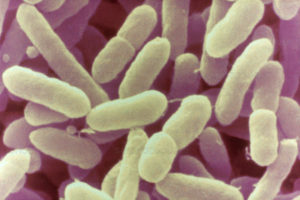With so many potential paths available to food safety and quality assurance professionals, how do you narrow your career path goals, and when is it time to move on to a new opportunity? These were two of the themes of last month’s Women in Food Safety gathering. Featured speaker, Jennifer McEntire, Ph.D., founder of Food Safety Strategy and former Chief Food Safety & Regulatory Officer at the International Fresh Produce Association (IFPA), discussed her 25-year career path and why she chose to step out on her own as an independent food safety consultant.
The keys to a long and satisfying career are to keep an open mind and explore opportunities, said McEntire. Having trained as a food microbiologist, her career was heavily influenced by an early internship at the National Food Processors Association (later to become the Grocery Manufacturers Association) in Washington, DC. She later worked with IFPA and regulatory consultancies including the Acheson Group and Leavitt Group. Her experiences in DC instilled in her an appreciation for regulations and an interest in what she referred to as “being in front of the debate in forming legislation.”
“I love reading regulations, I love DC and I enjoy learning how decisions are made, the debate of a bill and finally how it gets passed,” said McEntire. “So I have always worked in the regulatory area.” However, as she moved up the ladder, she realized that she was spending more time in meetings than rolling up her sleeves and working and decided to go out on her own as a consultant. “I am naturally risk adverse,” said McEntire. “So, I made this transition very cautiously.”
Questions to Ask
The questions that have guided her career decisions, which she encourages other professionals to ask themselves are, “What am I good at? What do I like to do?”
Although she has a very strong background in regulations and compliance, when launching her own company she wanted to take the opportunity to broaden that scope and work with companies in building better food safety management systems. “I didn’t want to focus just on audit compliance as these clients are often just compliance focused. Instead, I wanted to work with companies that wanted to be better, build and improve their operations,” said McEntire. Key questions she encourages companies to ask (that she asks clients) are, “Where do we go from here? What does success look like?”
Owning and managing her own company gave her the opportunity to build her skill set outside of food safety regulation. “Owning my own business isn’t easy, but at each stage I learn something new. For example, how to build a website and how to manage my company email accounts,” said McEntire. “Although there are many new things, I enjoy being responsible for my own schedule. I don’t have to ask anyone for permission and I actually don’t miss working for an employer anymore.”
Tips for Success
McEntire shared several tips that contributed to her success, including:
- surround yourself with the right people.
- stay informed and keep up-to-date
- take advantage of the opportunities that arise
“Throughout your career, it’s important to let your opinion be heard,” she said. As you move into leadership positions, “I ask everyone what they think, then gather all information and make sure I understand it. If you have to make the decision, make a decision that you are confident in based on the information available. You may get challenged, but be strong, defend it and don’t hesitate in making the final decision.”




























